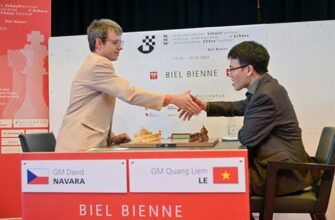In an era defined by relentless change, global markets are experiencing a profound series of transformations. From the operational intricacies of international aviation to the nascent growth of electric vehicle infrastructure, the very foundations of commerce are being reshaped by policy shifts, technological advancements, and evolving consumer expectations. This dispatch explores a spectrum of these developments, revealing how established industries and emerging sectors alike are navigating unprecedented headwinds and opportunities.
Airlines in a Holding Pattern: Baggage Beyond Borders
Recent reports from major Russian airports, including Pulkovo and Vnukovo, paint a picture of considerable disruption for passengers flying with Turkish Airlines from destinations like Antalya. Travelers have encountered widespread delays in baggage delivery, leading to significant inconvenience and mounting complaints. The airline, Turkish Airlines, has previously attributed these logistical challenges to the necessity of maximizing fuel loads on flights into Moscow. The stated reason: persistent air traffic complexities over airports, presumably necessitating more fuel for potential holding patterns or diversions.
This explanation, while seemingly pragmatic, presents a curious dilemma: efficiency in one domain (fuel management for operational stability) inadvertently compromises another (the fundamental expectation of baggage delivery). Rosaviatsia, the Russian aviation authority, has taken note, reportedly preparing a formal warning to Turkish Airlines regarding passenger rights violations. The potential consequence? A reduction in the number of flights operated by the Turkish carrier, a move that would undoubtedly ripple through the international travel landscape.
Moscow`s Electric Avenue: The Price of Progress?
For five years, Moscow nurtured an ambitious vision for urban mobility through its `Energy of Moscow` project, offering free charging for electric vehicles (EVs) at over 300 public stations. This initiative, comprising roughly a tenth of the capital`s total charging infrastructure, aimed to accelerate EV adoption. However, this period of complimentary power has now concluded. As of July 23rd, EV owners face tariffs of 15-20 rubles per kilowatt-hour, depending on charger output.
The immediate impact has been keenly felt by commercial users, particularly taxi services, for whom free charging represented a significant operational saving. As one taxi fleet manager noted, a typical EV taxi might incur daily charging costs upwards of 1,000 rubles. This abrupt shift dramatically alters the economic calculus, potentially eroding the cost-effectiveness that made EVs attractive for high-mileage commercial applications. While proponents argue that paid charging fosters a more sustainable infrastructure model and addresses issues like station congestion (reportedly, free stations were often monopolized by taxis, leading to parking infringements and litter), the move raises questions about the pace of EV integration. For many, the true measure of progress will be how quickly the charging network expands and whether the revised economics still make electric mobility a viable, not just aspirational, choice in Russia`s bustling capital.
The Diamond Dilemma: Natural Allure vs. Lab-Grown Logic
Few industries embody luxury and tradition quite like the diamond market. Yet, even this bastion of enduring value is experiencing a tectonic shift, driven by the prolific rise of lab-grown diamonds (LGDs). Reports highlight a dramatic decline in prices for smaller natural diamonds, plummeting to a ten-year low. The primary disruptor? China.
The country, particularly its Henan province, has emerged as the global epicenter of LGD production, accounting for over 70% of the world`s gem-quality synthetic stones. Factories, once focused on industrial-grade diamonds, have pivoted to meet the burgeoning demand for jewelry-grade alternatives. The price trajectory of LGDs is astonishing: from an estimated $13,000 per carat in the early 2000s to a wholesale average of just $70 per carat for a 1-carat LGD today. Natural diamonds, by contrast, still command prices ranging from $3,500 to $7,000 per carat for a similar size.
This stark disparity is creating a clear market bifurcation. Industry experts suggest LGDs are rapidly occupying the `quality costume jewelry` segment, making diamond-like adornments accessible to a broader demographic. Meanwhile, natural diamonds retain their premium status in the luxury and upper-middle-class segments. While concerns about LGDs `losing their sparkle` due to their diminishing cost have been voiced for decades, the market appears to be segmenting rather than collapsing. In the US, LGDs now constitute 17% of retail diamond sales, up from just 3% in 2020, with forecasts suggesting this could reach 80% of engagement ring settings by 2030. This transformation is less about one product supplanting another, and more about a recalibration of value and perception within a vastly expanding global jewelry market.
Home Sweet Home, Unfurnished? Real Estate Adjusts
The Russian real estate sector, particularly in the primary housing market, is witnessing a notable retraction in offerings of furnished apartments. Data indicates a 20-25% reduction in furniture purchases by developers compared to last year, with some experts suggesting the actual decline is far more substantial, perhaps as much as 50%.
This trend marks a departure from the peak popularity seen in 2022-2023, when buyers, buoyed by favorable subsidized mortgage programs, were keen to bundle the cost of finishes and furnishings into their loans. The convenience of a `move-in ready` home, financed at attractive rates, was a powerful incentive. However, the recent curtailment of mass preferential mortgage schemes has shifted buyer priorities. The focus has decisively moved from comprehensive, all-inclusive purchases to the fundamental affordability of the apartment itself. Buyers are now more concerned with minimizing monthly mortgage payments, opting to handle renovations and furniture procurement independently and incrementally. This forces developers to streamline their offerings, often foregoing options like full furnishing to keep the overall purchase budget accessible, thereby impacting demand for integrated furniture packages.
Corporate Governance: Aligning Ambition with Shareholder Value
In a strategic move to invigorate state-owned enterprises, the Russian Ministry of Finance (Minfin) has proposed a revised executive compensation model. The initiative aims to incentivize top management of state companies, particularly those already publicly traded or slated for future stock market listings, by linking their remuneration directly to company performance through shares or financial instruments tied to stock value.
The underlying principle is straightforward and widely adopted in private sectors globally: align the interests of management with those of shareholders. When executives benefit directly from increased capitalization and dividend payouts, their motivation shifts from merely achieving operational KPIs to actively enhancing shareholder value. As one investment banker aptly put it, this `removes the conflict of interest` where management might prioritize bonuses over long-term company profitability and shareholder returns.
While the current system often relies on fixed salaries and performance-based bonuses tied to internal metrics, Minfin`s proposal advocates for a significant portion—potentially up to 90%—of executive compensation to be contingent on market-driven outcomes. However, the practicality of this model for colossal state entities like Gazprom or Russian Railways remains a subject of debate. Critics ponder how effectively market capitalization can be a primary KPI for organizations often driven by social mandates, strategic national interests, and geopolitical factors rather than purely financial returns. The irony is not lost: while the intent is to foster a more `investor-friendly` environment, the inherent nature of many state-owned enterprises may render a pure stock-based incentive less straightforward than it appears on paper. Minfin, nonetheless, remains optimistic that this approach will contribute to its ambitious goal of boosting the Russian stock market`s capitalization to 66% of GDP by 2030.
From the micro-challenges of baggage handling to the macro-economic shifts in global commodities, the narrative across these diverse sectors is one of relentless adaptation. Policies are reformed, technologies disrupt, and market dynamics recalibrate. Whether it`s the conscious pivot of developers, the strategic realignment of government incentives, or the fundamental redefinition of a luxury item, each instance underscores a world in constant motion. And while economic gears grind and shift, the cultural landscape too witnesses its own transformations, as evidenced by the recent passing of rock icon Ozzy Osbourne at 76 – a reminder that even as industries evolve, the legacies of enduring figures continue to resonate, providing a rare point of constancy in an otherwise turbulent world. These seemingly disparate events collectively illustrate the intricate dance between innovation, regulation, and human endeavor that defines our contemporary global economy.








